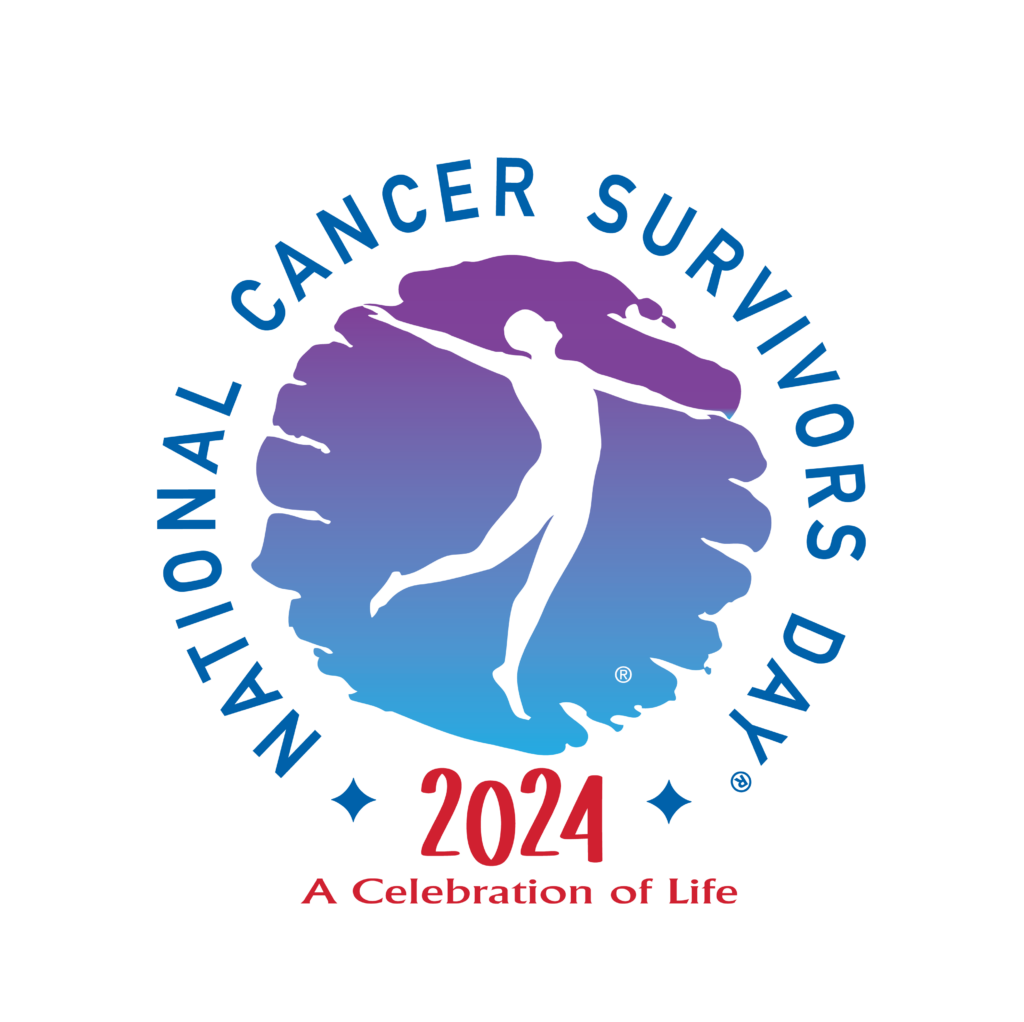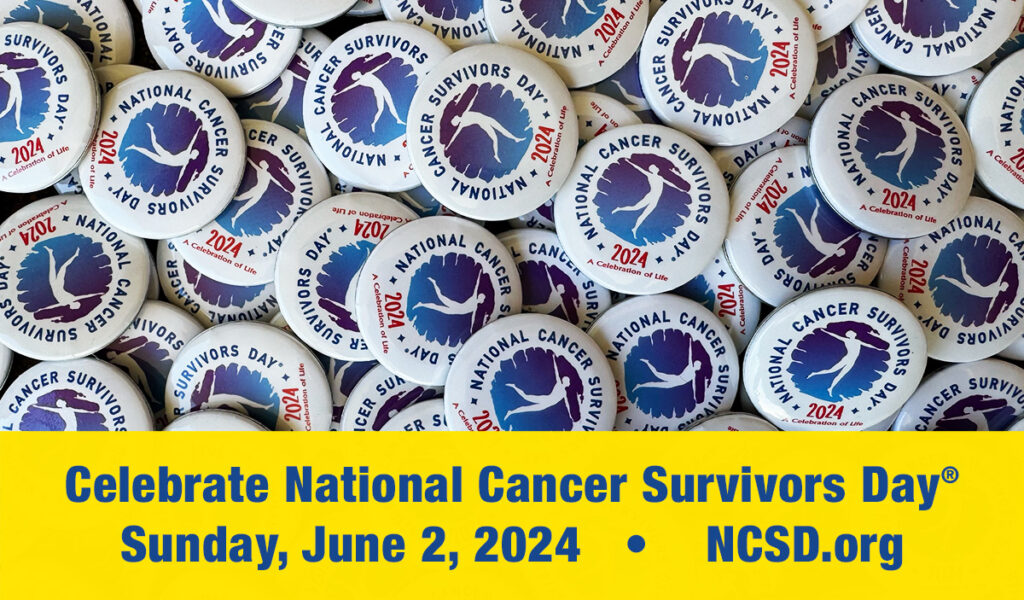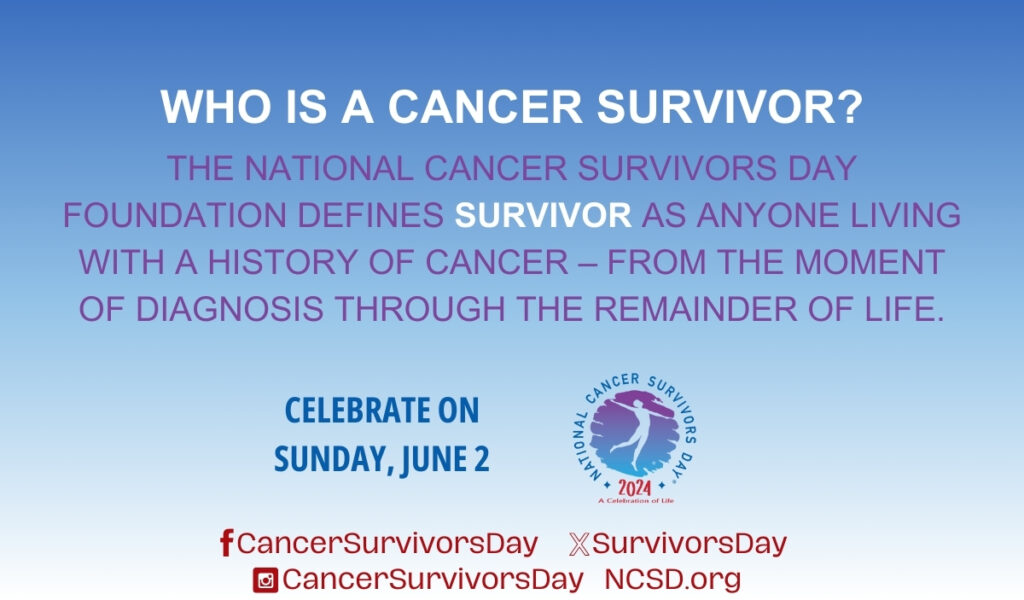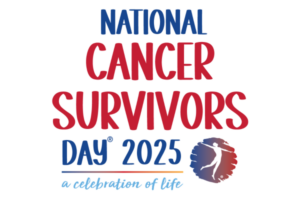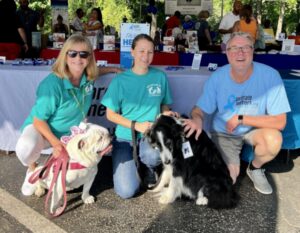Show your support of National Cancer Survivors Day® 2024 by sharing these graphics on social media!
To access the full NCSD 2024 Social Media Toolkit including the Press Release, promotional copy to use, graphics, logos, and printables, please click here.
Spread the Word about Your Local Event
June 2 is National Cancer Survivors Day! Join us for our (name of event) to celebrate life and raise awareness of the issues of cancer survivorship. #NCSD2024
June 2 is National Cancer Survivors Day, a day to recognize cancer survivors, to raise awareness of the ongoing challenges cancer survivors face because of their disease, and – most importantly – to celebrate life. Please join our community’s celebration at/by (insert details about local event). #NCSD2024
Today we’re celebrating National Cancer Survivors Day at (organization name)! Join us as we celebrate life and raise awareness of the challenges of cancer survivorship at/by (insert details about local event). #NCSD2024

